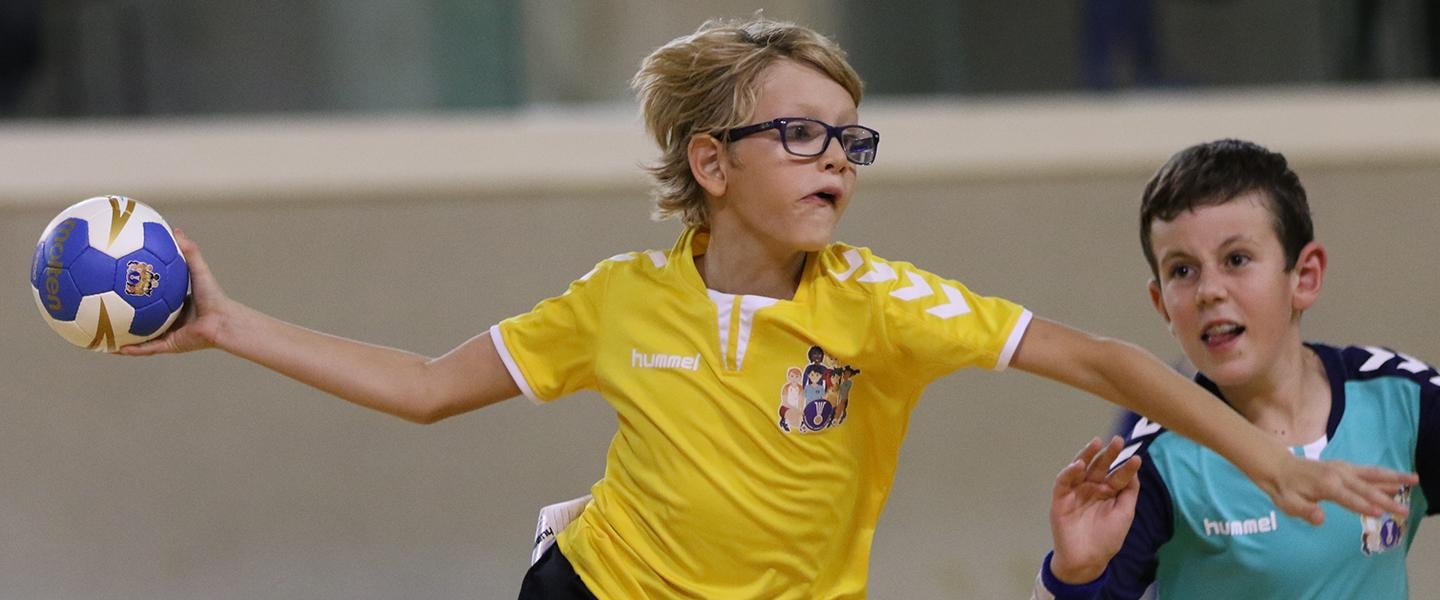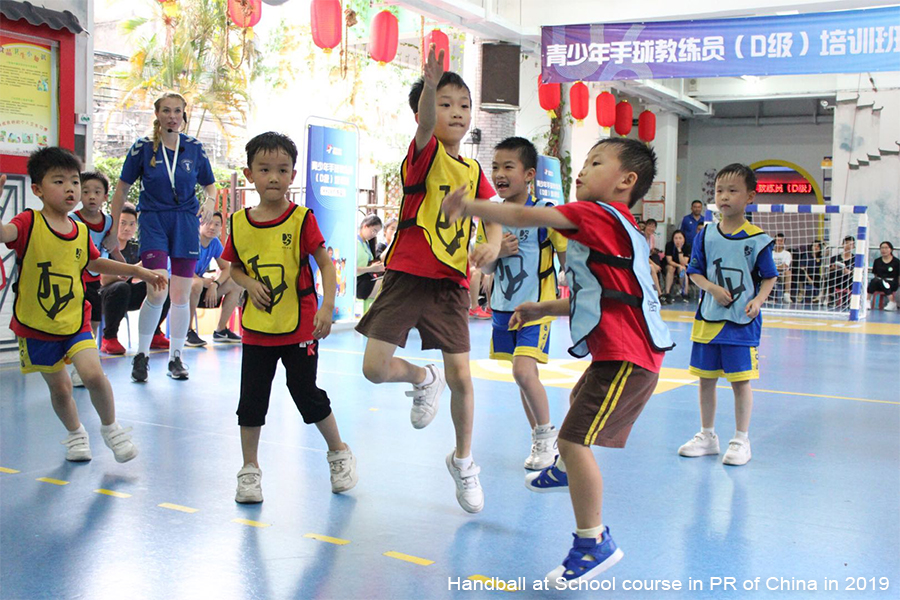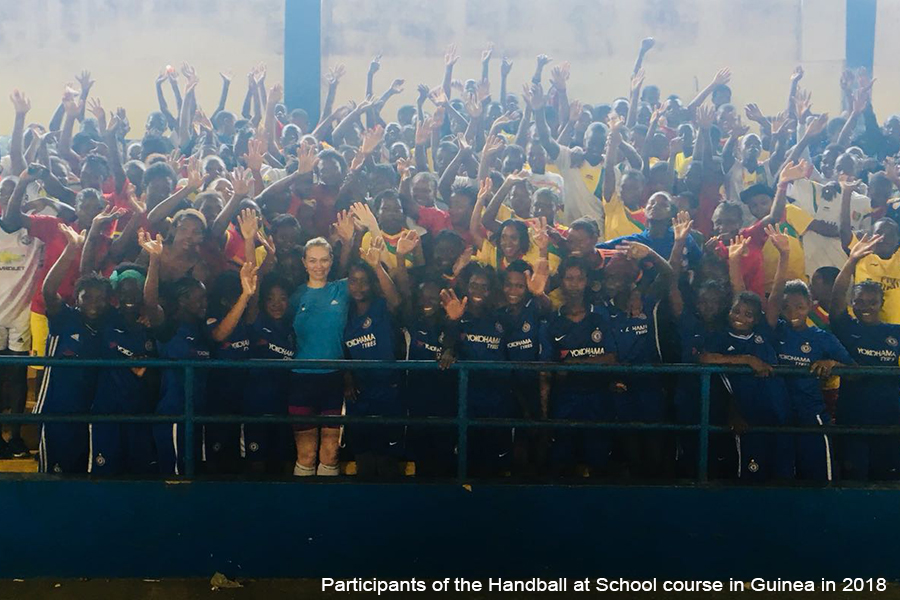The boom of children’s handball: handball’s future looks bright
15 Jul. 2021

Handball. A beautiful game. Accessible for everyone, irrespective of age, gender or strength. Where stars are born and legacies are made on the court, on the biggest stages. But, as a matter of fact, how are stars really born? How does a small child grow up to be a an extraordinary player? It all comes down to a mix of the first steps made on the court, a touch of personal skill and the daily effort put in at every training session, a daily grind for every player.
However, the crucial part is applying the decisive touches during the first years on the court. When handball is only a game, when the love for this game is developing, as players are scoring goals for fun. This is why the International Handball Federation (IHF) has put serious work into developing a more attractive game to encourage children to take up handball.
Changes made to ensure the growth
It has been 10 years since the IHF launched a comprehensive training and education programme for physical education teachers and coaches in schools across all continents called Handball at School. The aim is to introduce and teach handball with adapted rules to make the sport more accessible, challenging and enjoyable for children between the age of 5 and 17. The motto of the programme? “Fun, passion and health,” inviting children to take part and enjoy the benefits of handball.
“Children are the future of everything, there is nothing without children. If you want to have handball stars, you have to start with the children. When you are young, the main motivation is not necessarily about winning, it is also about health and a healthy lifestyle. Handball is one of the easier sports to take on, because you do not need plenty of equipment,” says Dr Ilona Hapkova, the Chairwoman of the Handball at School Working Group.
Under the Handball at School programme, various changes and adaptations have been made in the handball rules, enabling children to enjoy the sport even more. The courts were made smaller and the number of players in each team was also cut, seeing three-versus-three, four-versus-four and five-versus-five games being played. To ensure the protection of the players and their development as a whole, no contact is allowed in children’s handball, transforming it into one of the safest sports for children in the current days. The aim was to help the players develop better, integrating them into the game, by making sure that each and every player is in possession of the ball for a sufficient amount of time.

The modifications duly delivered, as the number of children playing handball throughout the world ballooned, with the Handball at School programme carrying out more than 100 editions around the world prior to the COVID-19 pandemic hitting in 2020, developing more than 300 centres for the sport’s growth.
Five million children playing handball
According to a survey conducted by the IHF in 2019, more than five million children were playing handball, a rapid and sustainable growth due to the modifications made in the past years, as physical education teachers and young coaches were handed leaflets and materials to better conduct their training sessions and improve the attractiveness of children’s handball.
“Children get to play actively more often and be successful. They really feel part of the game and they can play, not being only spectators, as the wings, who were just running aimlessly, as they did not get the ball too often.”
The IHF was one of the first International Federations to create a programme not only for professionals, but for physical education teachers focused on handball, with an emphasis on how handball can be taught in schools – not only the sport per se, but also the principles of the sport.
“We have 16 Handball at School teachers who are travelling around the world sharing knowledge. Therefore, with all our stride, people are starting to understand that handball is suitable for children and the interest is growing more and more in the past years,” added Hapkova.
Aiming for 50 million children playing handball in six to eight years
With the COVID-19 pandemic changing the rules and the paradigm, children’s handball might have suffered, but as the world is slowly getting back on its feet, the aim is high. Therefore, the IHF has tried to ensure that the Handball at School programme is not affected and has made use of the newly-created IHF Virtual Academy, organising a Children’s Handball Week in August 2020 and holding the first-ever IHF Children’s Handball Symposium from 4 to 28 May 2021.
Free and open to anyone with an interest in spreading the word of handball, eight live webinars took place in the framework of the Children’s Handball Symposium via Zoom, with attendees who took part in all eight sessions receiving a special certificate of participation.
Under the motto, “Everything you need to start playing handball now”, the webinars featured various subjects, from strategies to introduce handball to children, examining the pitfalls experienced when starting a programme, to organisational difficulties in the training process and how to achieve a flow in training sessions for handball newcomers.
As five million children are currently playing handball throughout the world, the aim is to make the sport even more popular, with a target of hitting a pool of 50 million children, 10 times more than the current crop, in the next six to eight years.
“If we promote handball as suitable for schools and education, I think the growth will be big, organically. In the past, handball was the sport that focused on strength. And it will also be the case in the future. But the basis starts somewhere in the early days, with no contact,” concluded Hapkova.

Header photo: PatriciaSports

